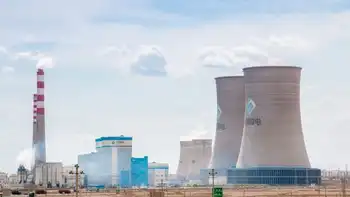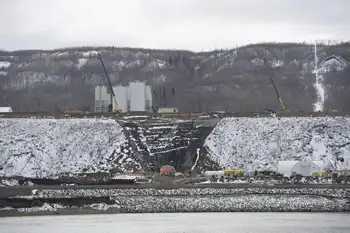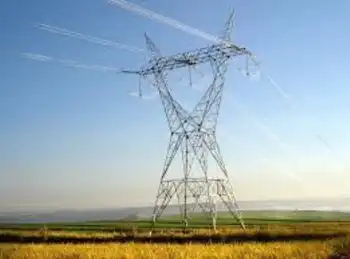Coal goes toe-to-toe with renewables in Philadelphia
A monstrous crusher smashes excavated rock - some pieces half the size of a car - under the white light of 12-volt halogen lights strung along the mine roof. More than 200 steel shields, each able to bear 975 tons, prop up that roof as the walls below it crumble.
High along some of the state's forested ridges, meanwhile, wind turbines churn, their sleek, 150-foot-long fiberglass blades slicing through air in a mesmerizing rhythm.
And between earth and sky, atop rooftops or planted in rows on farmland, framed panels of silicon angle upward like sunning butterflies.
In the battle for energy supremacy in Pennsylvania and around the country, these forces of nature - coal, wind, and solar power - are key combatants.
In January, the coal lobby gained what it considers a friend in the governor's mansion: Tom Corbett, a native of Western Pennsylvania, where coal still pays the bills in thousands of households and underwrites community projects, and where a coal queen is crowned every year.
What that means for the state's fledgling alternative-energy industries is not yet clear. But the stakes are high: energy-market share in a new era of electric deregulation and consumer choice and, as former Gov. Edward G. Rendell argued for years, Pennsylvania's ability to re-engineer its economy to one more dominant in clean technology.
Significant strides were made early in Rendell's eight-year administration, with legislation mandating renewable alternative-energy use. But more recent efforts to build on that failed, largely because of resistance from the coal industry, the reigning source of power in Pennsylvania for more than 100 years.
Even today, the U.S. Energy Information Administration says, coal feeds 53 percent of the state's electricity-generation needs, followed by nuclear power 35 percent, natural gas nearly 9 percent, "other renewables" 1.3 percent, and hydroelectric power 1.1 percent.
On one side of the debate: the state's still-thriving coal towns, largely in the southwest. On the other: former industrial regions, such as Philadelphia, Pittsburgh and Allentown, that after decades of job loss see fresh economic opportunity. At a former U.S. Steel site in Bucks County, Pa., for example, a wind-turbine manufacturer employs 265.
But deregulation of the electricity market makes the battle relevant to all Pennsylvanians. It has given them more choice over who supplies their electricity, and how much of it - if any - they want to come from alternative sources such as solar and wind power.
According to the Energy Information Administration, 15 states and the District of Columbia have deregulated electricity markets.
Already, the coal industry considers itself threatened by federal regulations aimed at reducing pollution and global warming - measures that could force utilities to shutter coal-fired power plants rather than invest in upgrades to meet stricter standards for carbon-dioxide emissions.
Yet coal's might is still formidable, according to an April report prepared by the Pennsylvania Economy League of Southwestern Pennsylvania LLC for Families Organized to Represent the Coal Economy Inc.
"The impacts of the coal industry reach across the entire state," said the report, which offered these 2008 statistics:
-Pennsylvania was the fourth-largest U.S. coal producer, with bituminous coal most of what is mined. Anthracite mining faded when oil replaced it for home heating in the 1950s.
-The coal industry was responsible for $7.5 billion, or 1.5 percent, of the state's $500 billion gross domestic product.
-Nearly 9,000 people were directly employed in coal mining, with an additional 33,000 in industries that supply goods and services, including stores and other places where coal workers spend their wages.
-Pennsylvania's mining-machinery and equipment-manufacturing industry accounted for more than a quarter of all those employed in that line of work nationwide.
-Exports accounted for about $1 billion, or 15 percent, of Pennsylvania's coal orders - demand driven by Europe as coal producers in Germany and other countries increasingly sent their output to Asia, especially China.
Certainly, coal's muscle has atrophied considerably since its heyday in the early 20th century, when demand from the U.S. steel and railroad industries seemed insatiable.
At World War I's start, Pennsylvania coal was mined at a rate of 265 million tons a year, far more than the 65.5 million tons now extracted.
Those employed in coal mining topped 370,000 when excavation tools were mostly picks and shovels, rather than the computerized machinery that produces "far more tons with far fewer workers," said Jon Wood, vice president of government and external affairs for Alpha Natural Resources, operator of 20 mines in Pennsylvania.
Technology has already meant fewer coal-industry jobs. Now alternative forms of energy stand to threaten even more of them.
Corbett has said his energy plan includes renewable sources, but he has not provided specifics. His office did not respond to requests for an interview for this article.
The coal lobby's political action committee - which donated a total of $4,000 to Corbett's campaign in 2009 and 2010 and $142,796 to federal and state candidates from 2000 through 2010 - promises a renewed offensive to protect its turf.
Said George Ellis, president of the Pennsylvania Coal Association, the industry's lobbying group: "All we're asking for is a level playing field."
Coal's supporters argue that alternative-energy endeavors are still largely buoyed by state and federal subsidies.
Alternative-energy advocates counter that coal has had a lopsided advantage in the state for decades, aided by a coal caucus in the legislature during the 1980s.
A new caucus of 68 lawmakers was formed last spring, and "we look for it to be more of a visible force in the next session," Ellis said.
That comes as no surprise to those in alternative energy.
"You've got entrenched interests with enormous amounts of capital to make sure they are the only game in town," said Steve Buerkle, a Chester County, Pa., solar entrepreneur.
Actually, coal increasingly is not the only game in town. An October report by the Solar Foundation, a nonprofit organization that funds research and education, estimated 6,700 solar jobs in Pennsylvania, with total U.S. solar-job growth forecast at 26 percent by the end of this year as solar power becomes more affordable.
According to the American Wind Energy Association's 2009 annual report, more than 4,000 Pennsylvanians worked in the manufacture of wind turbines and component parts, ranking the state fifth in wind-energy supply-chain employment.
Energy "represents an opportunity in this region that can be bigger than the pharmaceutical sector. Everyone uses energy. Not everyone uses pharmaceuticals," said Kevin P. Brown, a search-firm executive and founder of Cleantech Alliance Mid-Atlantic, created two years ago to spur innovation and investment in alternative energy.
In an interview shortly before he left office, Rendell warned that if the state did not increase its alternative-energy mandates soon, "all of the economic development and growth that we've generated is in danger of being lost." He noted that Pennsylvania's neighbors had passed measures that exceeded its once-leading clean-energy standards.
Rather than fighting more robust-use requirements for alternative energy, Rendell said, the coal industry "should be looking to government to help them develop the technology to capture and sequester carbon."
"If we can achieve that," he said, "we are the Saudi Arabia of coal, and the coal industry will be the dominant economic driver in the next century."
By state counts, 350,000 green jobs - including 205,600 in energy efficiency and 25,300 in renewable energy - were created during Rendell's eight years as governor. Pennsylvania invested $1 billion in alternative energy during that time, plus $1.3 billion from federal and private sources.
But before serious money was spent, Rendell wanted to prove Pennsylvania was serious about building demand for alternative energy. In 2004, at his urging, the legislature made it one of the first states to enact alternative-energy use requirements.
The law mandated that renewable and alternative sources serve at least 18.5 percent of Pennsylvania's annual electricity requirements by 2021. Current use is 14 percent. To further cast the state as a player, in his last two years in office Rendell sought increases to those standards.
Resistance came from a variety of interests, including operators of power plants and the Pennsylvania Chamber of Business and Industry. They, like the coal industry, viewed the measure as unfairly establishing a market for certain forms of energy to the detriment of others.
But the other opponents' influence in the state pales when compared to coal's.
Jack Trackemas, 49, is a third-generation miner. He has been working underground for 30 years, despite the efforts of his father - who lost a leg in a mine-roof collapse - to talk him out of it.
Trackemas is general manager of Cumberland Mine in Greene County, about an hour south of Pittsburgh, overseeing more than 700 workers whose primary job in the now-highly mechanized business is equipment maintenance.
He shrugs off suggestions that the mine's danger and isolation should be a turnoff, saying, "Coming underground is like walking into a factory for us."
A factory whose continued busyness seems assured. Energy-industry observers say an abundance of the black rock is yet to be unearthed, 10 billion to 20 billion tons of it in Pennsylvania alone.
Coal still has some major advantages. By one estimate, the cost of generating electricity with it - depending on factors such as transportation and labor costs - is $40 to $65 less per megawatt-hour than with solar photovoltaic panels, though $4 to $42 per megawatt-hour more than wind.
And its supply is more reliable: Coal does not have to wait for the wind to blow or the sun to shine.
Even cutting carbon-dioxide emissions at coal-fired power plants would require using coal.
"It will take about 15 percent more coal to run the CO2 capture equipment," said Jay Apt, a technology professor at Carnegie Mellon University in Pittsburgh.
Indeed, the coal lobby's leader is among those who foresee no imminent demise for the industry, even as the drilling frenzy within the natural-gas-laden Marcellus Shale proceeds.
"As a transition fuel, we're going to be here for the next 20 or 30 years at the very least," Ellis said. "We're still going to need power in such quantities and at such prices that right now only coal can provide."
So why such dogged opposition to boosting alternative-energy dictates?
"This is a deregulated electric market," Ellis said. "When you have a law that says you have to use a certain amount of electricity from a particular resource, that's gross intrusion. We believe that should be driven by the market, driven by customer choice."
That's why the coal association supported the late-1990s law allowing deregulation.
"We felt the key motivation for consumers was going to be price, and with coal as the least-cost fuel, we felt we would be in a comfortable position," Ellis recalled.
To the industry's horror, Rendell proposed use requirements for alternative energy a few years later. Just as they do now, coal advocates called the mandates unfair interference with the free market and initially opposed them.
But with the green movement in full bloom and passage of the standards all but certain, the coal association had a change of heart.
It joined the stakeholder process that helped shape the law, motivated, Ellis said, by a pragmatic thought: "How could we help influence it in a way so there's minimal harm to our industry?"
The answer was a provision in the law requiring the Public Utility Commission to review the alternative-energy standards, measure their impact, and report periodically to the legislature whether they should be increased.
Rendell's attempt to raise those standards toward the end of his tenure was premature, Ellis said, since the last of the decade-plus-long rate caps on electric utilities just came off Jan. 1.
Gamesa, a wind company whose U.S. headquarters are in Bucks County, was among the advocates for increasing the requirements.
That it didn't happen before a new governor from coal country took office does not make Dirk Matthys, chief executive of Gamesa North America, particularly anxious.
Corbett's energy plan includes renewables, Matthys said, and he "was gracious enough" to tour Gamesa's Fairless Hills, Pa., plant while campaigning last summer.
Matthys also noted that his company has a wind-turbine plant in Western Pennsylvania, Corbett's home turf. In all, Gamesa has created more than 800 jobs here, attracted to the state largely because the original alternative-energy standards were adopted.
Other states have since adopted more aggressive standards, a fact Corbett cannot afford to ignore, Matthys said: "Jobs and manufacturing are going to go where you have a better environment."
Though not ready to say Gamesa would leave Pennsylvania if alternative-energy use requirements were not ramped up, Matthys said, "In the long term ... we need to look at the best options."
The best option for the state, said Cleantech Alliance's Brown, is for all energy sectors to adopt a philosophy that "it's not either/or. It's got to be everything."
DEREGULATION:
The following states have deregulated electricity markets:
-Connecticut
-Delaware
-District of Columbia
-Illinois
-Maine
-Maryland
-Massachusetts
-Michigan
-New Hampshire
-New Jersey
-New York
-Ohio
-Oregon
-Pennsylvania
-Rhode Island
-Texas
Related News

Is nuclear power really in decline?
LONDON - By Kirill Komarov, Chairman, World Nuclear Association.
As Europe and the wider world begins to wake up to the need to cut emissions, Dr Kirill Komarov argues that tackling climate change will see the use of nuclear energy grow in the coming years, not as a competitor to renewables but as a competitor to coal.
The nuclear industry keeps making headlines and spurring debates on energy policy. With each new build project, the detractors of nuclear power crowd the bandwagon to portray renewables as an easy and cheap alternative to ‘increasingly costly’ nuclear: if solar and wind are virtually free…





